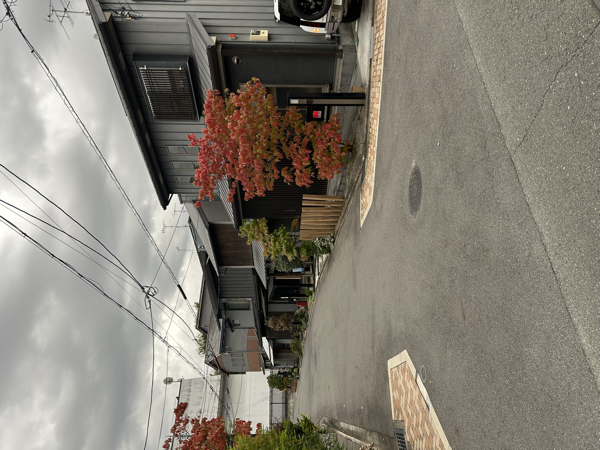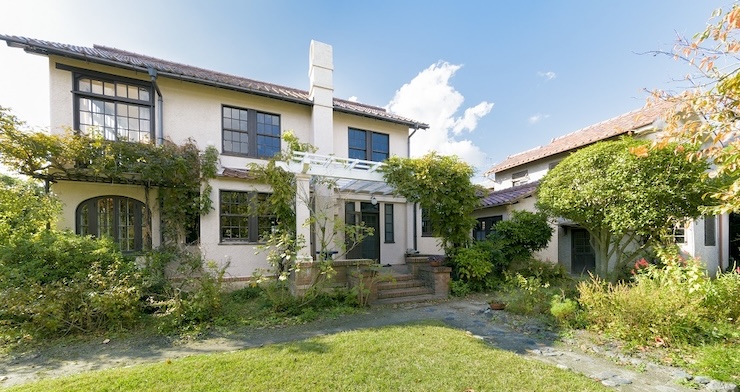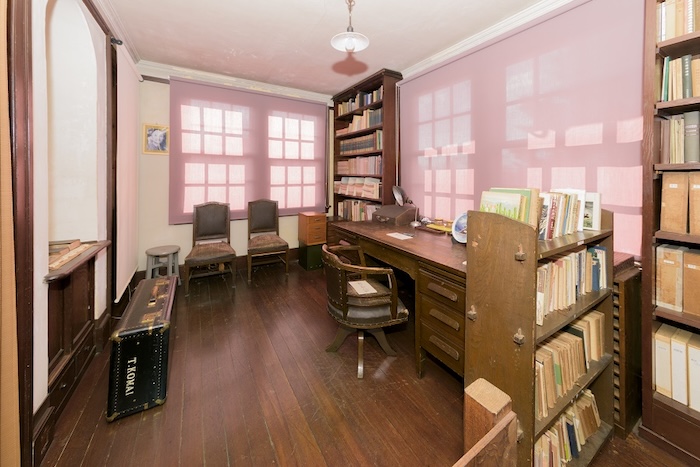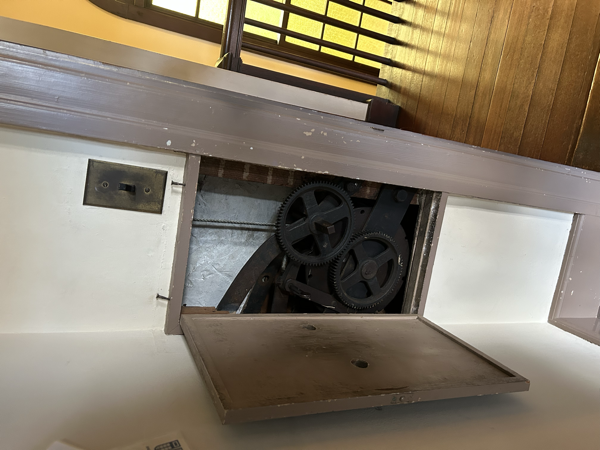Last Friday (December 5, 2025), I filmed an extended discussion with my Kyoto University colleague,…
Kyoto Report 2025 – 6
This Tuesday report will provide some insights into life for a westerner (me) who is working for an extended period at Kyoto University in Japan but who over the years of working here has increasingly began to understand the language and local cultural traditions.
Time is passing and the weather has now turned cold – scarves, gloves etc (at least for me).
Last night, I was riding back from a friend’s house on my bike and I realised that the season has finally turned.
It is downhill from here into Winter.
The colour in the trees is now starting to show – late due to climate change – but beautiful nonetheless.
Tokyo Symposium – 今求められる「責任ある積極財政」とは何か? (What kind of ‘responsible and proactive fiscal policy’ is needed now?) – November 6, 2025
On Thursday, November 6, 2025, I will be in Tokyo presenting at the Symposium noted above.
The event will be held in the National Diet Members’ Office Building (Parliament) and I am told that it has reached capacity in terms of audience numbers.
I am also informed that there will be many Members of Parliament attending as well as top level bureaucrats in the policy ministries.
So a good chance to get a message across.
The organisers are now going to stream the event via the Internet and on Thursday, when I know, I will publish the access.
The Program will be:
- 13:00 Doors open
- 13:45-13:55 Greeting from Diet members
- 13:55-14:25 Professor Satoshi Fujii
- 14:25-15:15 Professor William Mitchell
- 15:25-15:55 Takuji Aida (private sector economist)
- 16:00-16:45 Panel discussion
Remember that JST Thursday, November 6, 2025 – 13:00 is
– New York – November 5, 2025 – 11:00
– Sydney – November 6, 2025 – 15:00
– London – November 6, 2025 – 04:00
Heritage House – Sakyu Ward, Kyoto
Last weekend, I thought I would storm the Bank of Japan in Kyoto and reassign policy settings only to find out that there was an ichibana display on instead.
Somewhat chastined, this week I took a more moderate approach and visited the home of Japan’s first real expert on genetics, Professor Dr. Suguru Komai, which is located at 64 Kitashirakawa Ioricho, Sakyo Ward, Kyoto, 606-8256 (Western presentation of the address, which differs from the way the Kyoto addresses are known in Japanese, more about which another day.
The house is now managed by the Japan National Trust and the Japanese language page – 駒井家住宅(駒井卓・静江記念館) – provides all the interesting information.
Essentially, it was designed by William Vories, who was an American architect and a missionary in 1918.
Komai-sensei was also a Christian as was his wife Shizue.
I have often run past this house as it is a quiet part of Kyoto just north of the University’s main campus and adjacent to a canal (and path) which is lined with sakura trees (cherry blossoms).
The canal drains into the Takano River about 2 kms away from the house and for me the path and then river path provides a magical loop early in the mornings.
The house was built in 1927 and Komai-sensei became known as the ‘Japanese Darwin’.
There is an old photo of Charles Darwin in Dr Komai-sensei’s study on the second floor.
It is an interesting house because it mixes Spanish-style architecture (apparently popular in the US at the time) with some traditional Japanese elements (like a tatami room).
The sliding doors to the single tatami room are interesting because on the side facing the room they are in traditional style but on the other side, they are in Western style.
Details.
The garden is also magnificent and the persimmon trees were so full of fruit that the manager would stop loading our bags to take some home.
This picture of an elaborate mechanical gearing system hidden in a wall aperture controls a drop down secret staircase from the ceiling of the second floor, which allowed access to the rafters (and storage).
It is still in working order and is a magnificent contraption.
There are some serious clashes in the colour scheme of the house however.
Why, one wondered?
Well the answer was that the Americans commandeered the house during their occupation of Japan at the end of World War 2.
And, while the Komai couple were still in residence, the Americans bullied them into repainting sections of the house in different colours – which created a tasteless sabotage of the original design and ambience.
I asked the manager of the house what she thought about that.
She replied: アメリカ人 – which considerable inflection.
We both laughed – the exact sentiment I would have expressed.
The other aspect is the rather shallow, winding staircase up to the second floor.
Its shallowness was to accommodate Mrs Komai, who always wore a traditional kimono, even though she had been educated at Columbia University in New York and spoke perfect English.
It was a really nice hour or so on a sunny afternoon.
Saruya – Kyoto
One of my favourite things to do in the afternoon is to take a break from work and ride my bike down to the grounds of the Shimogamo Shrine and visit – Saruya – which is a little tea house that serves the most delightful tea and mochi.
Yesterday, even though it was a bit windy and cold I went down and had = 良縁ぜんざい (Good Luck Zenzai) – which promotes ‘good relationships’.
One learns that “since ancient times, five grains have been offered as auspicious gifts to Aioi-san, the god of matchmaking at Shimogamo Shrine”.
The Good Luck Zenzai is a red bean soup (azuki beans) and are served with red and white mochi.
Apparently, if one prays while enjoying the Zenzai, one will enjoy a good match with their partner in life.
And after all the prayer, we rode our bikes back to work happy, so I guess the magic worked.
But Saruya is a wonderful little place to sit and ponder.
How to hang your bicycle
I was out on my bike the other day, north of the delta and saw this bike hanging outside the front of the house.
Closer inspection revealed a very interesting bike rack.
Where to put one’s bike is sometimes a challenge in Kyoto because there are so many of them.
Over the years, I had found what I call my secret bike parks, especially if I venture down towards the main station area, which is rare.
Down that part of town are the loud-mouthed American tourists who seem to think that communication between two people standing less than a metre apart requires them to shout at the top of their voices.
No-one around them is interested in their banalities.
But they don’t seem to realise there are other people in the world.






Bill,
Wishing you a successful talk at the National Diet Members’ Office Building (Parliament).Thank you for your Kyoto Reports, I enjoy all of them. The Kyoto Reports, give me a special insight into Japanese life and culture. My deceased older brother John was a big fan of Japan and its culture.
Best Wishes
Wayne
Totally agree. Have greatly enjoyed all the Japanese blog posts, cultural and economic.
Fascinating, and I have some Pinus Thunbergii seeds to plant too.
We haven’t flown for 20 years, but Japan would be one of the very few exceptions we might make.
Hi Bill,
Will your talk at the National Diet be made available anywhere online?
Many thanks